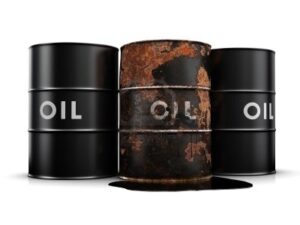 The Spill Prevention, Control, and Countermeasure (SPCC) rule includes requirements for oil spill prevention, preparedness, and response to prevent oil discharges to navigable waters and adjoining shorelines. The rule requires specific facilities to prepare, amend, and implement SPCC Plans. The SPCC rule is part of the Oil Pollution Prevention regulation, which also includes the Facility Response Plan (FRP) rule.
The Spill Prevention, Control, and Countermeasure (SPCC) rule includes requirements for oil spill prevention, preparedness, and response to prevent oil discharges to navigable waters and adjoining shorelines. The rule requires specific facilities to prepare, amend, and implement SPCC Plans. The SPCC rule is part of the Oil Pollution Prevention regulation, which also includes the Facility Response Plan (FRP) rule.
Oils are generally broken down into two main groups–petroleum and nonpetroleum types. Petroleum products are more toxic and tend to be more harmful to the environment and human health. Below is a list of Crude Petroleum Oils. If you handle any of these oils, make sure you are following the SPCC regulation. More information about the SPCC regulation can be found at http://www.epa.gov/oem/content/spcc/ You should also ensure that you invest in the right petroleum equipment and consult experts such as an oil reclamation service for everyone’s safety. These equipment and services may help you pass necessary audits or inspections from organizations like a Clean Fuel Regulation Verification Body.
Crude Oils
Here are some examples of crude oils:
- Class A (Light Volatile Oils). These oils are highly fluid and thus can spread rapidly when spilled. They are generally clear, have a strong odor, a high evaporation rate, and are usually very flammable. Although they can be highly toxic, they do not tend to adhere to surfaces, and flushing with water generally removes them.
- Class B (Nonsticky Oils). Class B oils are less toxic than Class A oils. These oils have a waxy feel and adhere more firmly to surfaces than Class A oils, thus requiring a more vigorous flushing with water for removal.
- Class C (Heavy Sticky Oils). Characteristics of Class C oils include a viscous and sticky consistency and usually a brown or black color. Although toxicity is relatively low, wildlife can be smothered if contaminated. The oil is difficult to remove from surfaces and will often sink in water.
- Class D (Nonfluid Oils). Class D oils are relatively nontoxic and black in color. However, when they coat surfaces, cleanup is extremely difficult.
Refined Oils
The following represent types of refined oils and their characteristics:
- Gasoline. Gasoline is very light, spreads and evaporates quickly, and is highly flammable. Gasoline is amenable to biodegradation, but the use of dispersants is not appropriate unless a significant human health or safety factor exists.
- Kerosene. Kerosene exhibits many of the same characteristics as gasoline, but it is not as
- amenable to biodegradation. Thus, it is much more persistent in the environment.
- No. 2 Fuel Oil. This oil is lightweight, spreads quickly, and is easily dispersed. It is not volatile, does not form emulsions, and is relatively nonpersistent in the environment.
- No. 4 Fuel Oil. Low volatility and medium weight are characteristic of No. 4 fuel oil. The oil can be dispersed if it is treated quickly, but it is somewhat persistent in the environment.
- No. 5 Fuel Oil. Also known as “Bunker B Oil,” it is a medium-to-heavy material with low volatility. It must be heated in cold weather and is nearly impossible to disperse.
- No. 6 Fuel Oil. This fuel oil may be heavier than water and does not readily dissolve or disperse. It has low volatility, and because of its heavy weight, it often sinks and forms tar balls, lumps, and emulsions. No. 6 fuel oil is also referred to as “Bunker C Oil.”
- Lubricating Oil. Although it is somewhat persistent in the environment, most lubricating oils can be easily dispersed if they are treated promptly. Lubricating oils are used for various commercial and industrial applications and may vary extensively in viscosity.
Environmental Risk Management deals with SPCC Regulations frequently.
